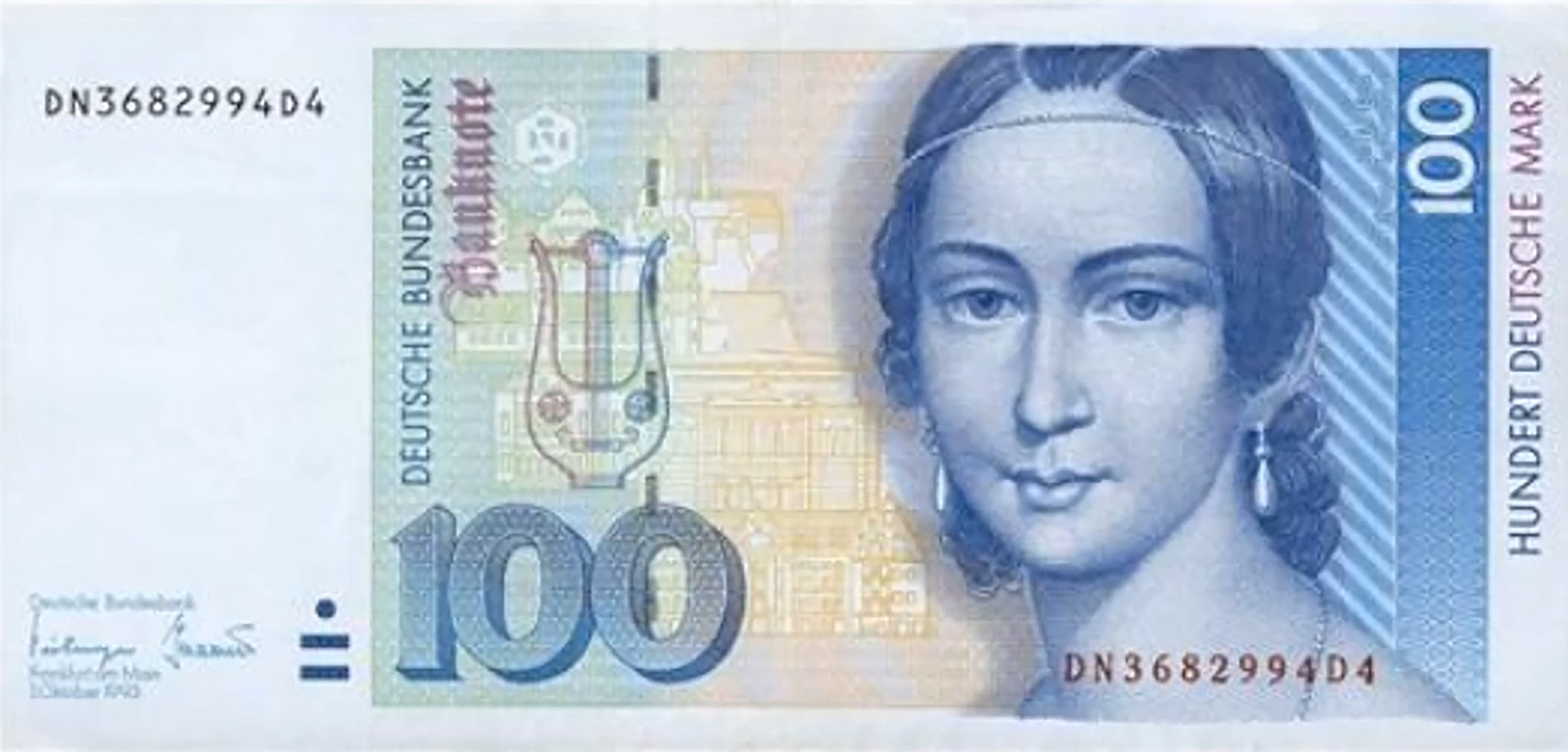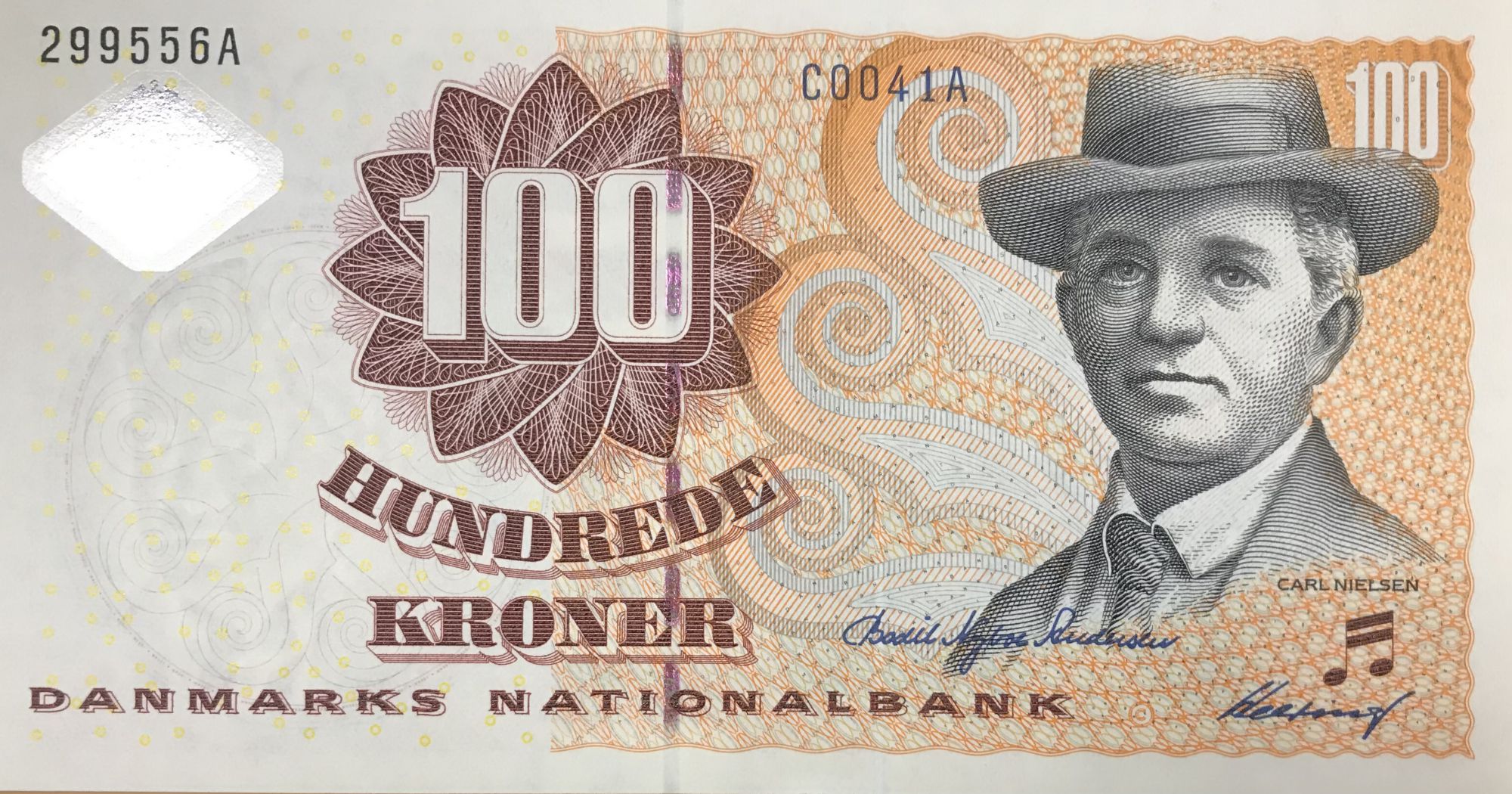20th November 2023
Colorshift: It’s time to go!
By Nick Pearson
Senior Currency Technologist
Security feature materials once considered secure, can over time, be weakened, as lookalike materials used in consumer and industrial applications become increasingly available.
At Crane Currency, we’ve been innovating and producing security threads for decades. Crane was the inventor of the demetallized security thread and this quickly became the basis of all demetallized security threads, including colorshift.
Crane has gone on to produce nearly every class of security thread and has produced thousands upon thousands of kilometers of colorshift thread. We know much about this feature, its origins and its strengths and weaknesses.
 Look closely at the image on the right. This is a fake. This was produced very quickly and easily using common materials. This green to blue colorshift looks even more realistic in real life.
Look closely at the image on the right. This is a fake. This was produced very quickly and easily using common materials. This green to blue colorshift looks even more realistic in real life.
This was actually a product of our own investigations, but numerous examples of these types of simulations can be found in counterfeit banknotes. Counterfeiters can be technically clever, and what’s more, can be expert in understanding public behavior. This combination guides their selection of materials, which they know will deliver the most realistic colorshift simulation and the best counterfeit.
UNDERSTANDING THE USER IS CRITICAL
User behavior – This is an area that the producers of consumer products spend a great deal of time and money understanding. We feel as banknote designers that we should too.
It will suffice to say that if you don’t understand the user, in this case, the behavior of the public, you’re likely to encounter unexpected and unwanted results from your security features.
Pictured here is a 100 Deutschmark from the early 1990s. Its window thread was innovative, but remember, for many years before this banknote was issued, the public was conditioned to authenticate security threads like a watermark by holding it up to the light.

Windowing security threads changed that by having the thread appear on the surface of the banknote. This altered user behavior. The public then adapted its behavior to what was easiest, to simply look for the metallic dashes on the note surface.
COUNTERFEITERS ARE EXPERTS OF USER BEHAVIOR
It didn’t take counterfeiters long to realize that metallic ink could create a good enough simulation of windows on a banknote. They understood the public’s behavior and adapted their counterfeiting techniques to exploit it.
This example reveals two important criteria for public security:
- Users, the public, are guided by convenience and ease of use.
- Feature effects must have a high resistance to simulation.
COUNTERFEIT RESILIENCE ANALYSIS
Now let’s think back to where we were in 2002. The US $100 bill looked old. The euro was brand new. That year was the birth year for colorshift security threads and the first use of it was in the Danish banknote. At the time, colorshift threads were exotic and expensive. They were narrow, typically under two millimeters wide. At the time, were these colorshift security threads secure?

To give us some idea, let’s consider their ease of use and counterfeit resilience as if it were 2002. If we jumped into a time machine and returned to 2002, we might rate these threads as having a score of 3 for ease of use, which is a pretty good score and a 30 for their resistance to simulation. Also a good score.

Remember that back in 2002 there were very few color changing materials or decorative films or foils available. Colorshift was exotic. So in our retrospective evaluation, we placed colorshift in the Green Zone, signaling its strength as a feature for the public. But what about today, twenty years later? How do colorshift threads rank now?
We asked the same question to a group of central bank participants at one of Crane’s Modern Banknote Fundamentals seminars. They were asked to compare colorshift security threads against three other features. These were RAPID® security thread, MOTION SURFACE® stripe, and a diffractive optically variable stripe. The different central bank groups were then asked to rate each feature for ease of use and counterfeit resilience.
The results were as follows. The colorshift threads fell into the red zone, ineffective and misleading. Participants based the low score on their knowledge of the many types of decorative and industrial films that can be used to create color change and recognize that these have contributed greatly to reducing the security of colorshift threads in recent years.
The micro-optic features scored well in both ease of use and difficulty of simulation, the movement being regarded as obvious and difficult to copy. Interestingly, the €20 stripe landed where we would have placed colorshift threads 18 years ago. It was seen by the groups as still reasonably difficult to counterfeit in spite of the many known simulations of it.

The reason why colorshift threads fell into the dangerous red zone is seen here. Participants in the central bank exercise knew of these materials and their increasing presence and availability.
This has greatly undermined the feature’s resilience to simulation. Striking examples of this are now commonplace with several commercially available materials. Colorshift is no longer the barrier that it once was. So the message is clear. Colorshift threads: It’s time to go. Nearly 20 years after their first use, they’re no longer secure.
EVALUATE SECURITY FEATURES WITH PUBLIC BEHAVIOR IN MIND
Regularly re-evaluate specifications. An average age of a banknote design today is over ten years. In addition, features may have become weak due to the availability of lookalike materials, and counterfeiters are always evaluating banknote features for weakness.
The public wants to spend banknotes, not authenticate them. Features that are easy to use will be the ones the public will actually use. We recommend using a method to turn subjective opinion into quantifiable ratings for an objective comparison. In this exercise, Crane is happy to help.
